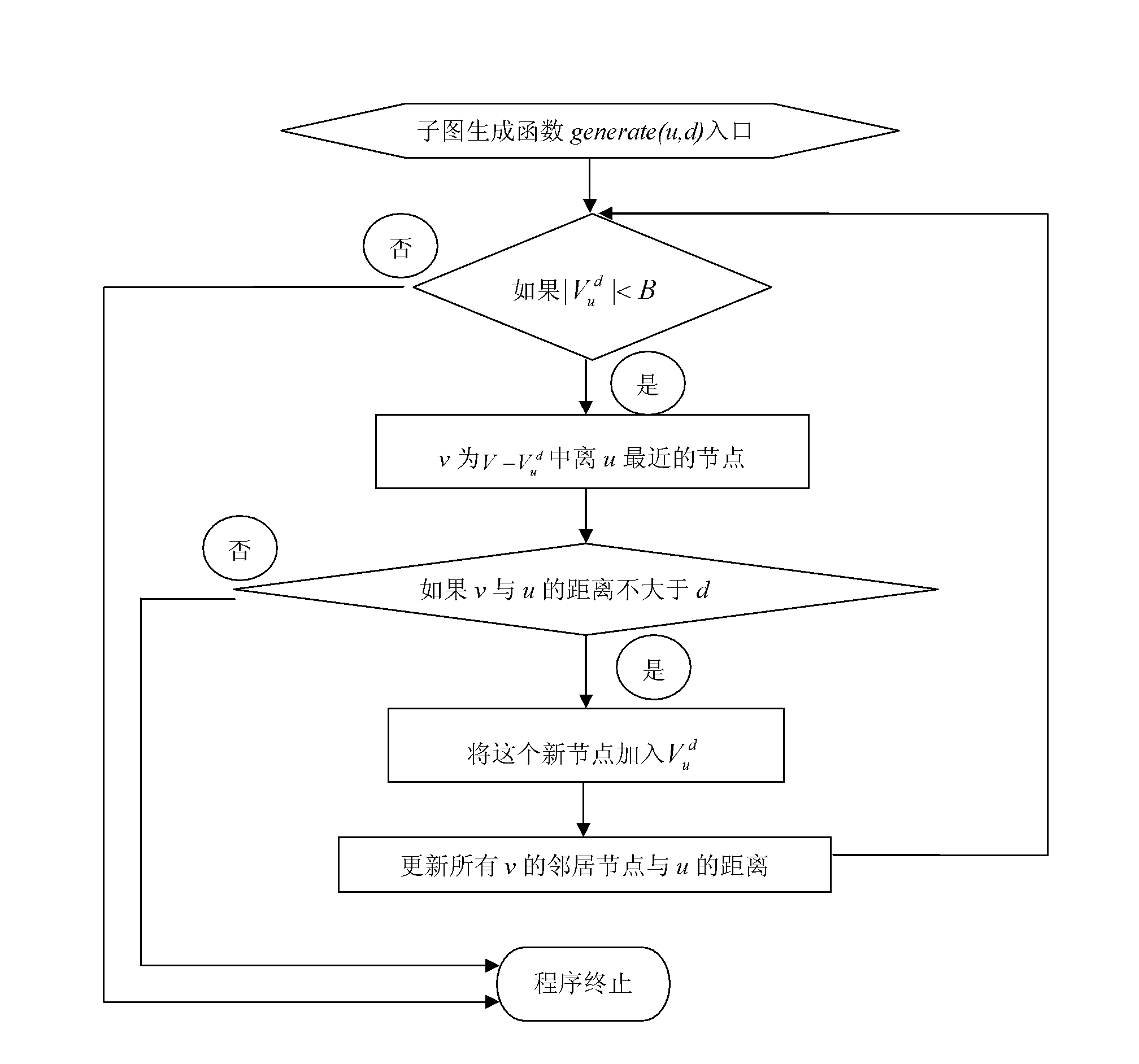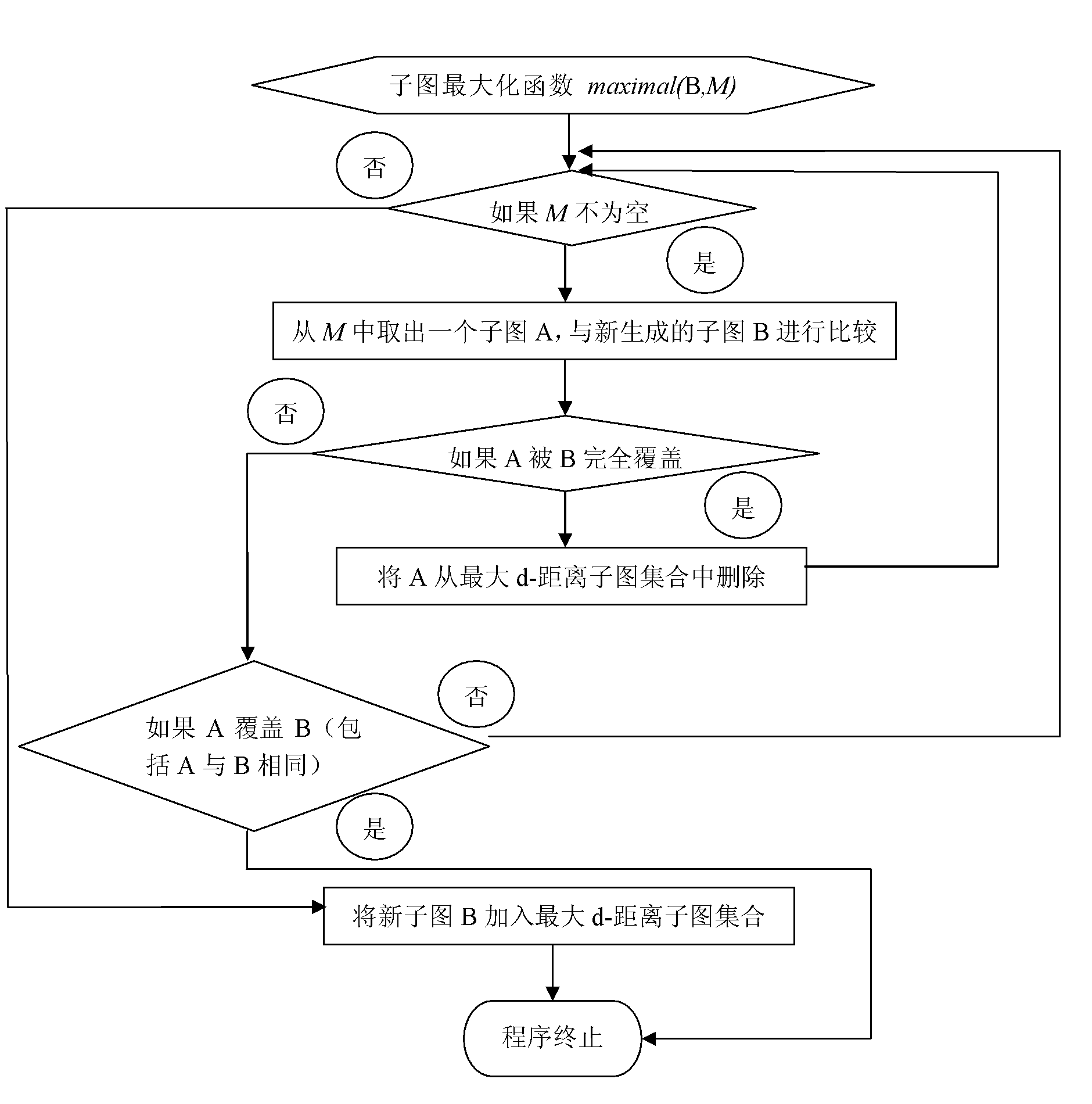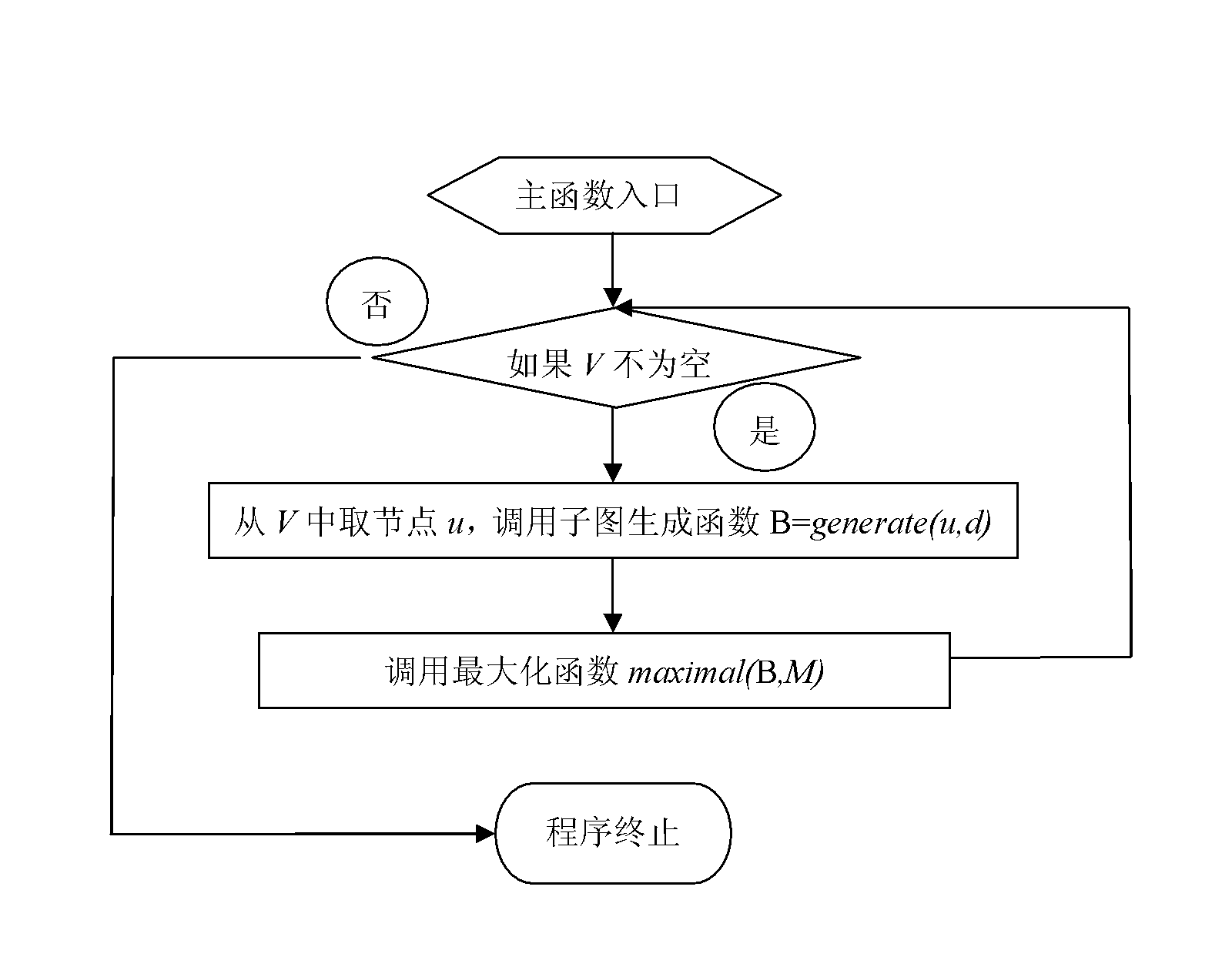Graph-index-based graph database keyword vicinity searching method
A proximity search and keyword technology, applied in the field of database keyword search, can solve problems such as performance degradation, inefficient index structure, failure, etc., to achieve the effect of improving efficiency and eliminating adverse effects
- Summary
- Abstract
- Description
- Claims
- Application Information
AI Technical Summary
Problems solved by technology
Method used
Image
Examples
Embodiment Construction
[0056] 1. Theoretical basis
[0057] The process of keyword proximity search on the graph is: Given a user’s keyword query {k 1 , k 2 ,...k l}, so that all the keywords that contain the query k i The set of nodes with (1≤i≤l) is M i , called the keyword k i set of matching nodes; using a certain heuristic algorithm, starting from the matching node set of each keyword, iteratively explores the nodes in the graph, if a visited node is connected to the matching nodes of all keywords by a known path , then generate a minimum connection tree with this node as the root node, if it is not covered by other generated answer trees, then save it as an answer tree; when k answer trees have been found , and the convergence condition is met, that is, no answer tree better than the current best k answer trees will be found, then the search is terminated.
[0058] Existing related methods generally adopt two ways to optimize this process: improve the efficiency by improving the heuristi...
PUM
 Login to View More
Login to View More Abstract
Description
Claims
Application Information
 Login to View More
Login to View More - R&D
- Intellectual Property
- Life Sciences
- Materials
- Tech Scout
- Unparalleled Data Quality
- Higher Quality Content
- 60% Fewer Hallucinations
Browse by: Latest US Patents, China's latest patents, Technical Efficacy Thesaurus, Application Domain, Technology Topic, Popular Technical Reports.
© 2025 PatSnap. All rights reserved.Legal|Privacy policy|Modern Slavery Act Transparency Statement|Sitemap|About US| Contact US: help@patsnap.com



